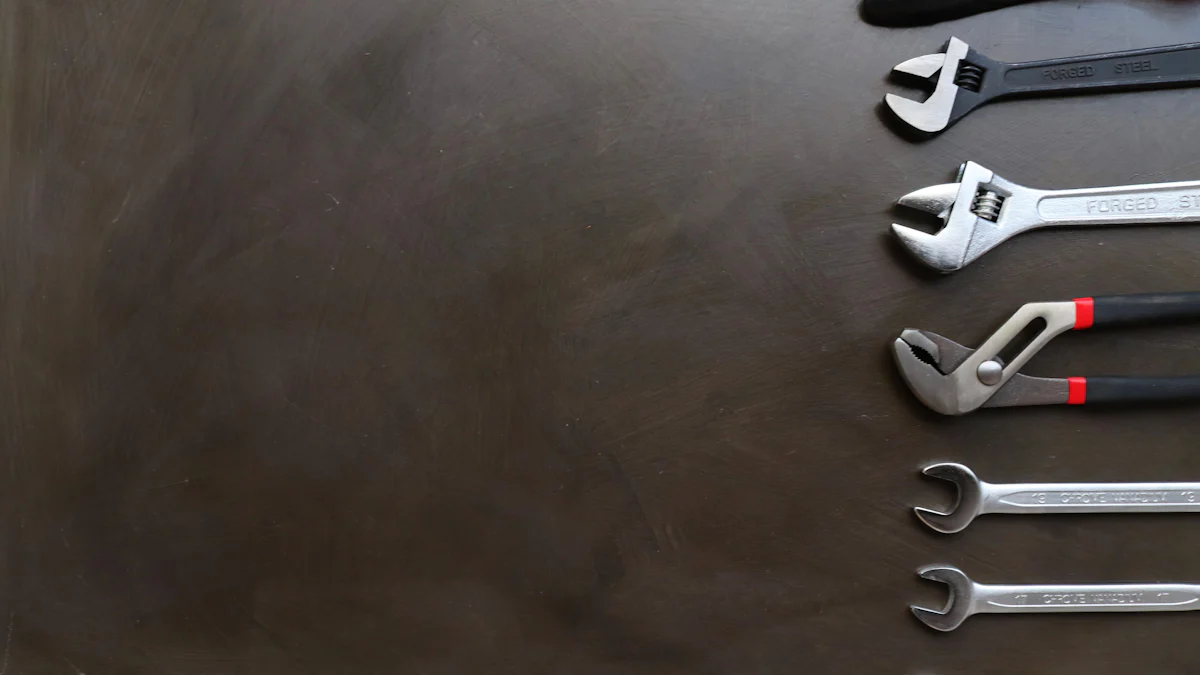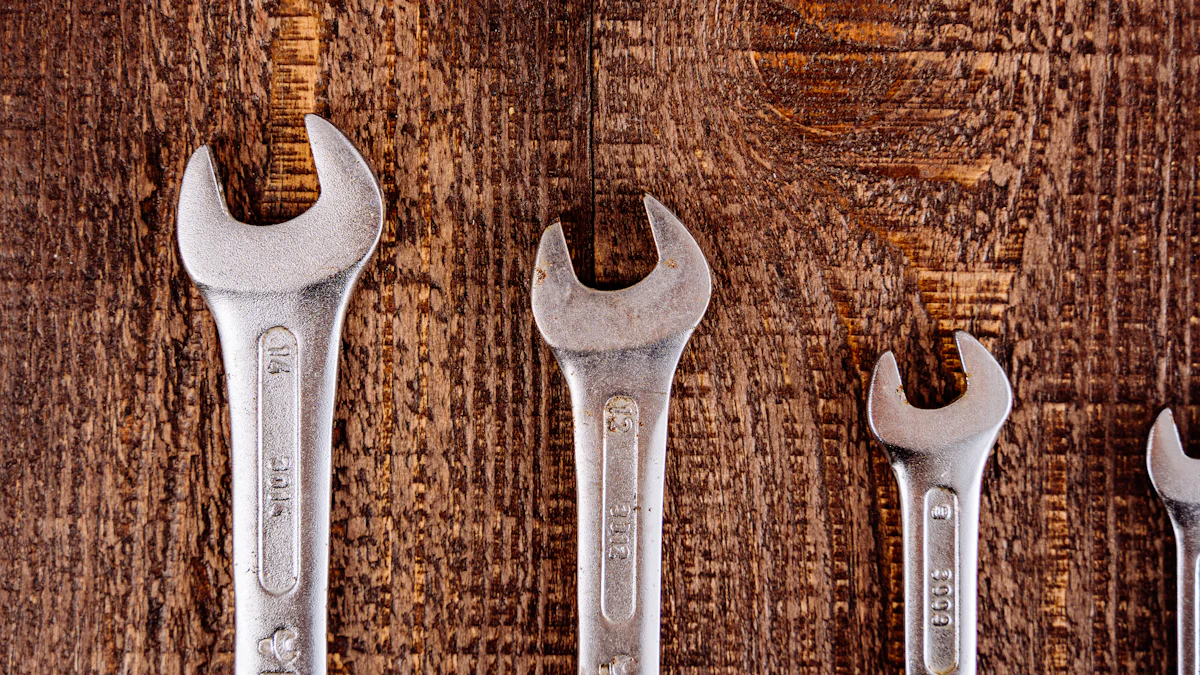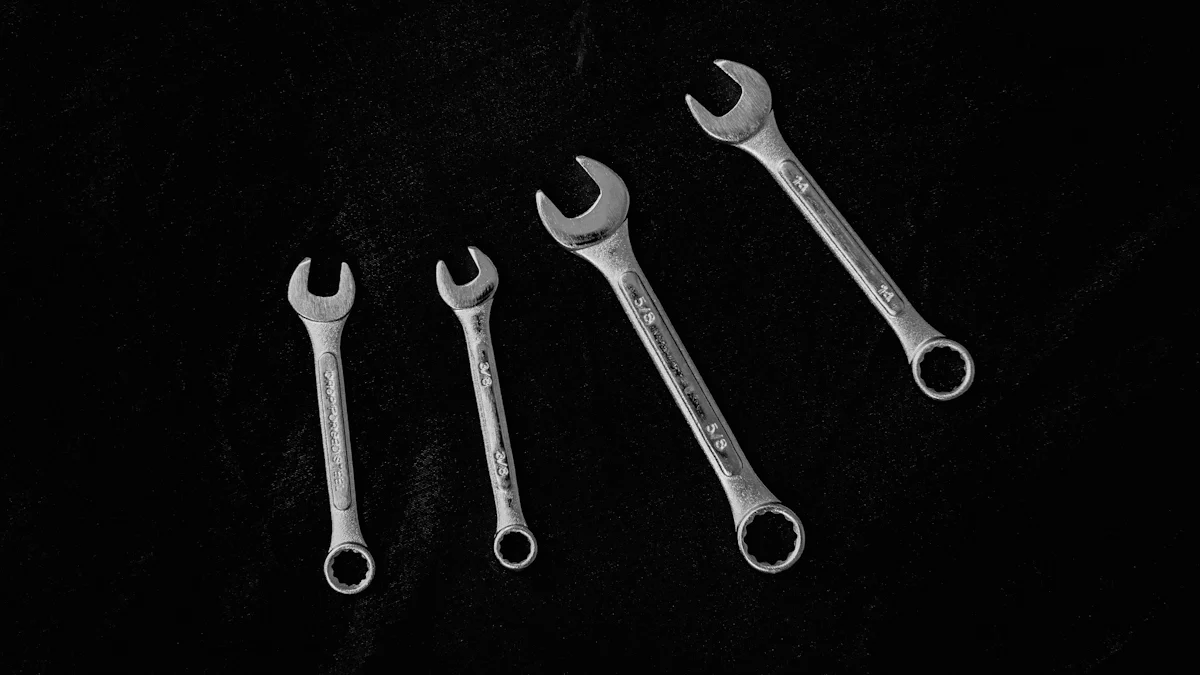
Wrenches play a crucial role in various fields, from automotive repair to construction. These tools tighten or loosen nuts and bolts, ensuring structures remain secure. Different types of wrenches, each designed for specific tasks, offer unique features and benefits. Knowing the correct type of wrench for a job enhances efficiency and safety. Understanding the names of each wrench in Spanish also proves beneficial for bilingual professionals and those working internationally.
Common Types of Wrenches

Adjustable Wrench
Description and Uses
An adjustable wrench features a variable jaw opening. This design allows the tool to unscrew and tighten screws and nuts of various sizes. The versatility of adjustable wrenches makes them suitable for tasks involving multiple fastener sizes. However, they may lack the precision fit of fixed-size wrenches. High-torque applications are not recommended for adjustable wrenches. The strong pressure and friction of the toothed jaws also make some adjustable wrenches suitable for working on cylindrical surfaces.
Spanish Name: Llave Ajustable
Combination Wrench
Description and Uses
A combination wrench combines two types of wrenches into one tool. One side features a box-end, a closed loop that grips hexagonal or square nuts securely. This end is ideal for tough-to-loosen nuts. The other side has an open-end, a U-shaped design perfect for swiftly unscrewing the nut once loosened. Combination wrenches offer a secure grip for applying greater force with the closed end and quick application and removal with the open end. While versatile, they may not match the efficiency of specialized wrenches.
Spanish Name: Llave Combinada
Socket Wrench
Description and Uses
A socket wrench often comes with a ratchet handle. This handle can be used with various sockets of different sizes. The usage of the ring wrench is similar to the two types above. Socket wrenches provide a convenient way to work with fasteners in tight spaces. The ratcheting mechanism allows continuous rotation without removing the wrench from the fastener, increasing efficiency.
Spanish Name: Llave de Vaso
Specialized Wrenches

Torque Wrench
Description and Uses
A torque wrench applies a specific amount of torque to fasteners. This precision tool ensures that bolts and nuts are neither too tight nor too loose. Automotive repair frequently uses torque wrenches, where precise torque values are critical for safety. Different types of torque wrenches include click-type, beam, and digital models. Each type offers varying levels of accuracy and convenience. Over-tightening can damage components, while under-tightening can cause loosening over time.
Spanish Name: Llave de Torsión
Pipe Wrench
Description and Uses
A pipe wrench grips and turns pipes and pipe fittings. The jaws of a pipe wrench have teeth designed to grip rounded surfaces securely. This wrench is essential for plumbing tasks, where it adjusts or removes pipes. The strong grip provided by the toothed jaws makes it suitable for high-torque applications. Unlike monkey wrenches, which have flat jaws, pipe wrenches excel in handling cylindrical objects.
Spanish Name: Llave Stilson
Allen Wrench
Description and Uses
An Allen wrench features an L-shaped body with hexagonal heads at each end. This design fits into hexagonal socket screws, making it ideal for tightening and loosening these fasteners. Allen wrenches are common in assembling furniture, bicycles, and machinery. The compact size and simple design allow for easy storage and use in tight spaces. The hexagonal shape provides a firm grip, preventing slippage during use.
Spanish Name: Llave Allen
Less Common Wrenches
Strap Wrench
Description and Uses
A strap wrench uses a flexible strap or chain to grip and turn objects. This design prevents damage to the surfaces being worked on. The tool is ideal for gripping and turning objects with irregular shapes or fragile surfaces, such as polished metal or plastic. The strap, usually made of rubber, creates friction and securely holds objects. Users can tighten or loosen round or circular objects by fitting the loop over the object and applying pressure. The strap wrench proves useful in automotive work, plumbing, and general household tasks.
Spanish Name: Llave de Correa
Chain Wrench
Description and Uses
A chain wrench features a chain that wraps around an object to provide a secure grip. This tool is particularly effective for working with pipes and cylindrical objects. The chain wrench’s design allows it to handle high-torque applications without slipping. Users can adjust the chain to fit various sizes, making it versatile for different tasks. The chain wrench is essential in plumbing and mechanical work, where it helps to tighten or loosen pipes and fittings.
Spanish Name: Llave de Cadena
Spanner Wrench
Description and Uses
A spanner wrench has a hook or pin at one end to engage with the slots or holes on the object being turned. This design provides a secure grip and allows for precise adjustments. Spanner wrenches are often used in machinery maintenance and repair, where they adjust or remove components with specific shapes. The tool’s versatility makes it suitable for various applications, including automotive and industrial work. The spanner wrench ensures that components are tightened or loosened accurately without causing damage.
Spanish Name: Llave de Gancho
Wrench in Spanish
Overview of Wrench in Spanish
General Term: Llave
The general term for a wrench in Spanish is llave. This word serves as the umbrella term for various types of wrenches. The term llave is essential for anyone needing to identify or use a wrench in Spanish-speaking regions. Understanding this term helps in recognizing different tools and their specific uses.
Regional Variations
Regional variations exist in the terminology for wrenches. In Spain, people often refer to an adjustable wrench as [llave inglesa](https://languagedrops.com/). This term differs from the general term used in other Spanish-speaking countries. Another example includes the term llave fija, which some regions use to describe a fixed wrench. These variations highlight the importance of regional knowledge when working internationally.
Importance of Knowing Wrench Names in Spanish
For Bilingual Professionals
Bilingual professionals benefit significantly from knowing the names of wrenches in Spanish. This knowledge enhances communication with Spanish-speaking colleagues and clients. Clear communication ensures that tasks proceed smoothly without misunderstandings. Bilingual professionals can also provide better instructions and receive accurate feedback when using the correct terminology.
For International Work
International work often requires collaboration with diverse teams. Knowing the names of wrenches in Spanish proves invaluable in such settings. Teams can work more efficiently when everyone understands the tools being used. This understanding reduces errors and increases productivity. Additionally, knowing the correct terms fosters a sense of professionalism and respect among international colleagues.
Understanding different types of wrenches and their uses proves essential in various fields. Knowledge of wrench names in Spanish benefits bilingual professionals. This skill enhances communication and efficiency. Familiarity with these tools improves work performance.
Two bilingual working professionals: “For me, it means to be a lifelong student, because I am a non-native speaker. And I do not share many of the identities as the folks I use my Spanish-speaking language capacities alongside. So I’m constantly learning from them about their language and the way that language fits in with their different cultures, because Spanish has so many different flavors based on where you come from. So I’m always learning.”
Professionals should strive to learn and master these tools for better efficiency in their work.
